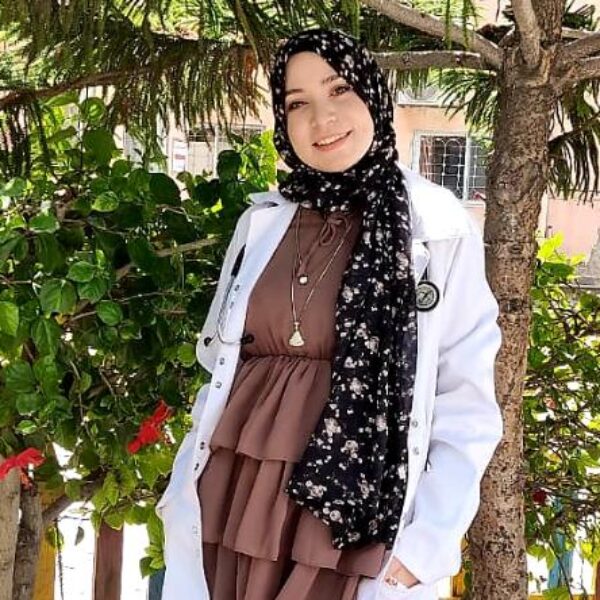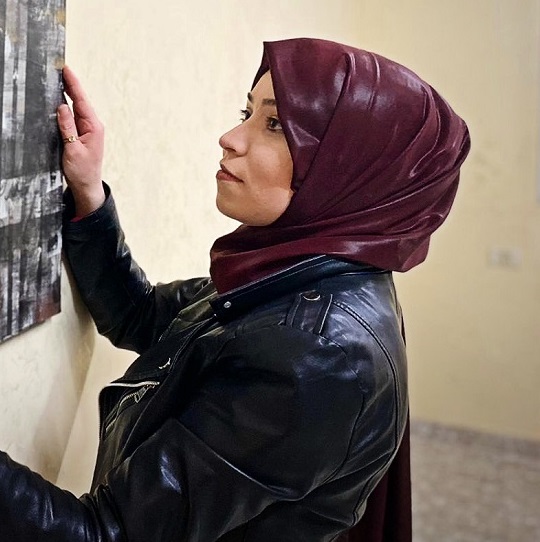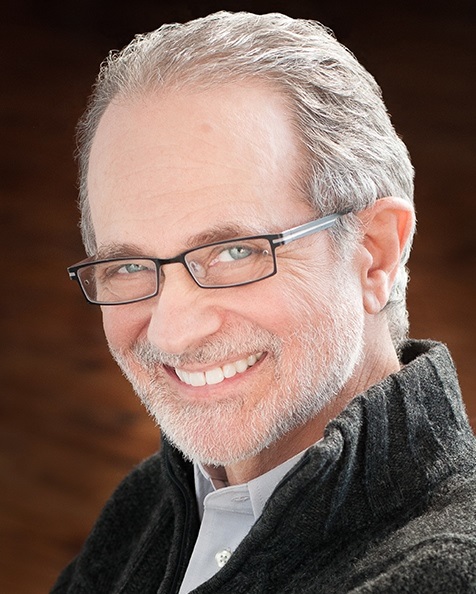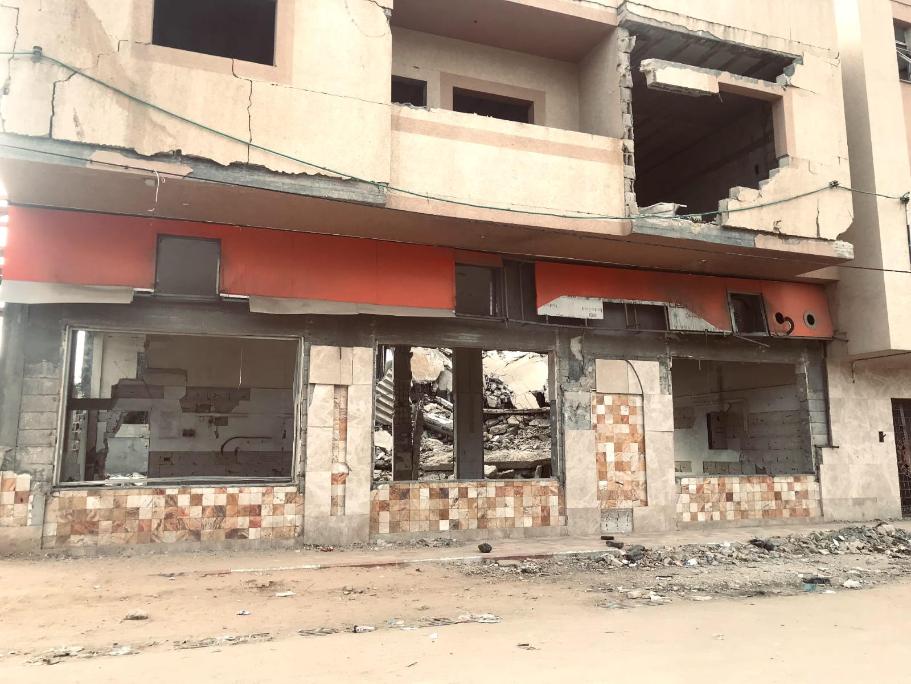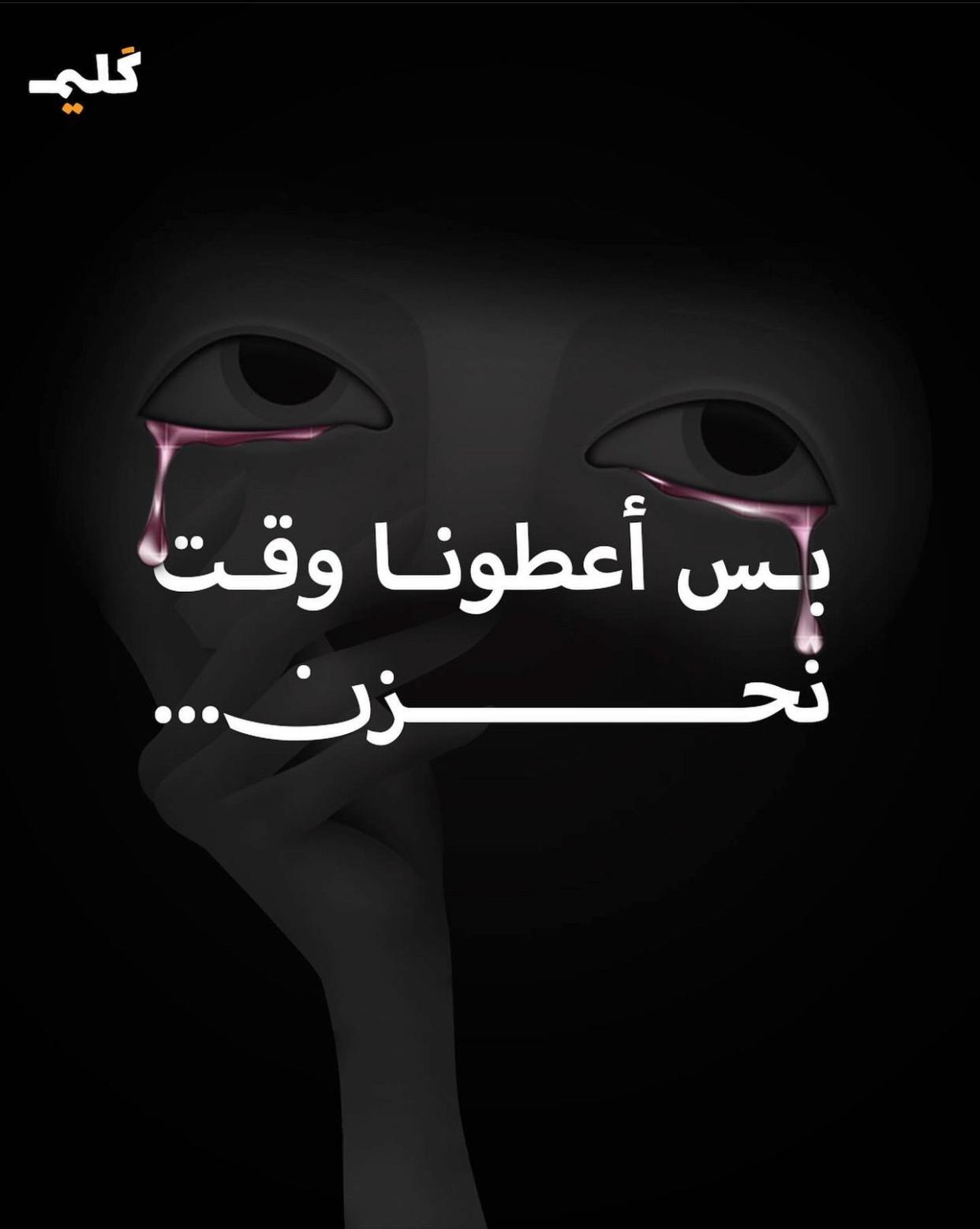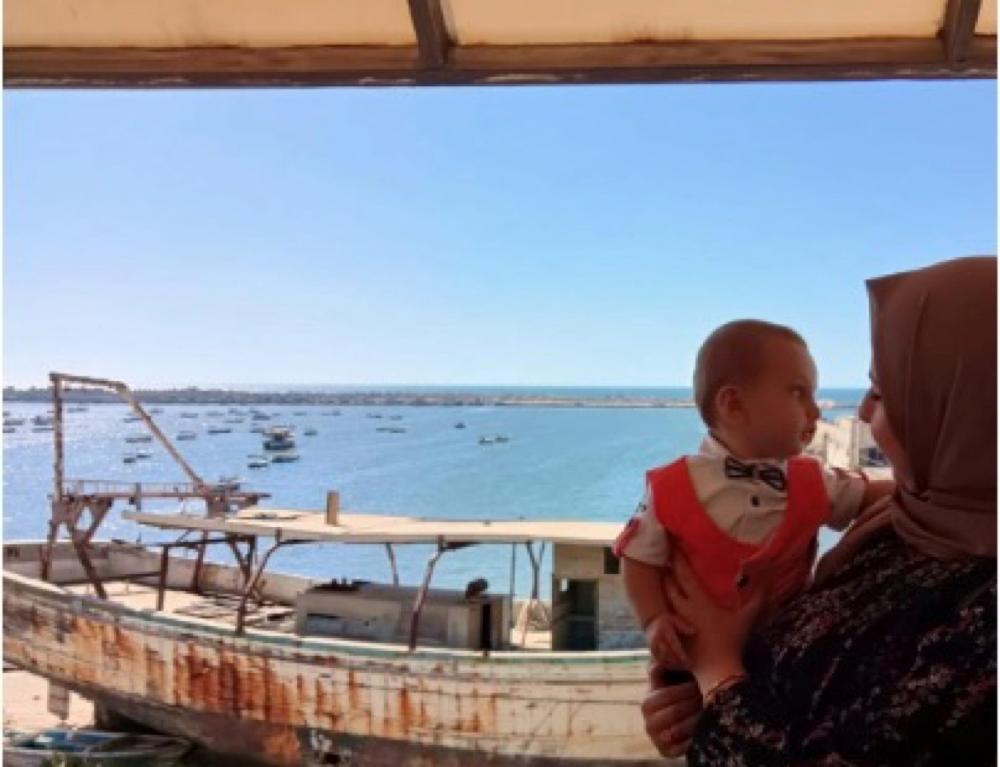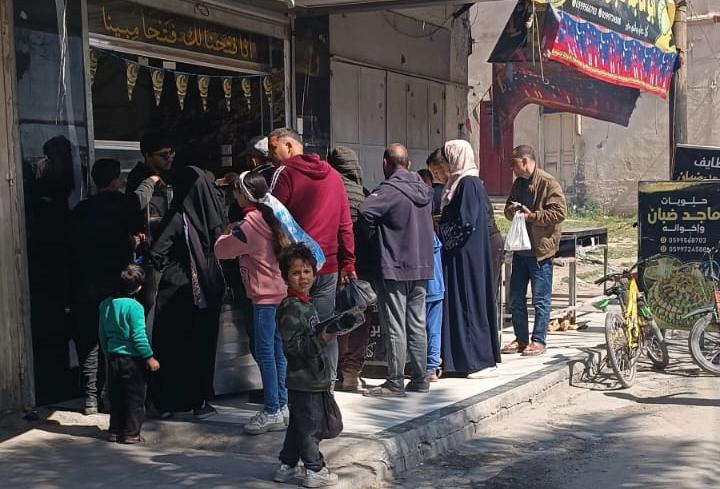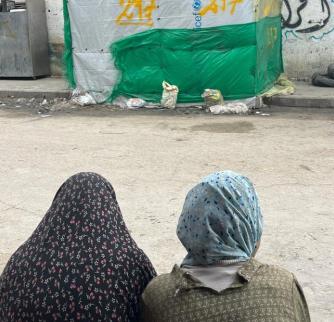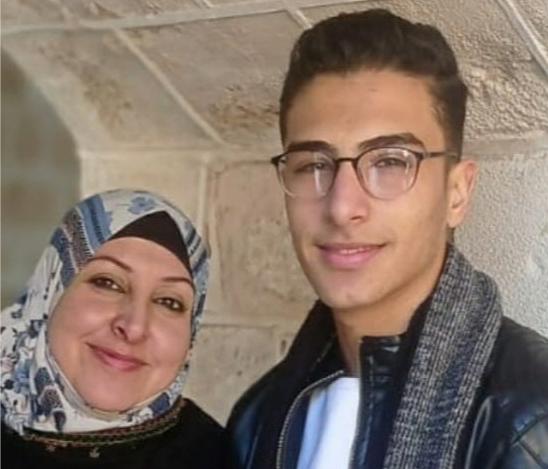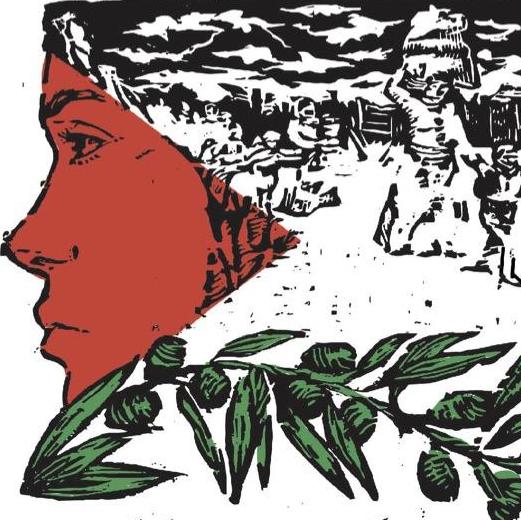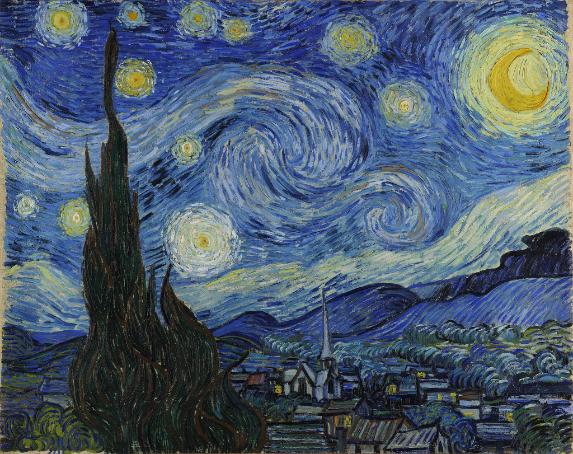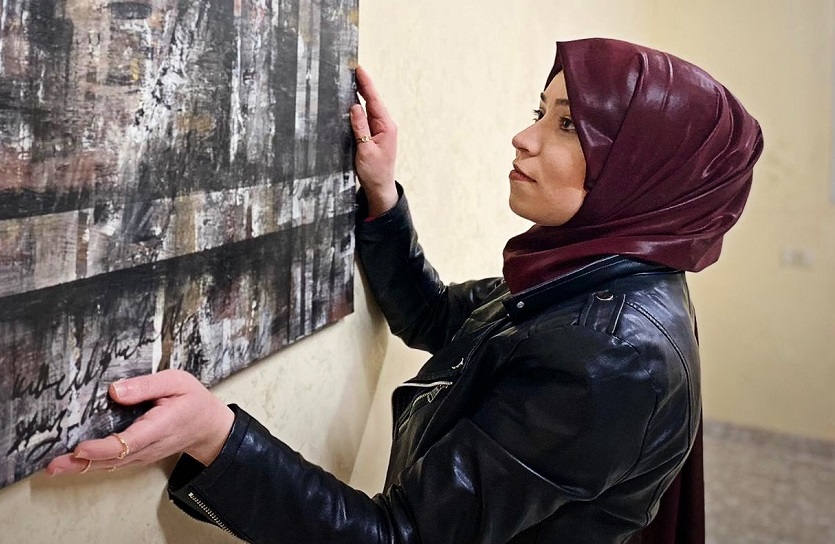 It was rainy that December day as I stood clinging to a crumbling wall on Gaza’s Omar Mukhtar Street waiting for a friend. As raindrops fell on the wall, I was taken aback by the scene. Before me was a wall that had stood through ancient conflicts as well as the conflict now central to my life and the lives of all Palestinians. Within this old wall were numerous stories I wanted to tell through my art.
It was rainy that December day as I stood clinging to a crumbling wall on Gaza’s Omar Mukhtar Street waiting for a friend. As raindrops fell on the wall, I was taken aback by the scene. Before me was a wall that had stood through ancient conflicts as well as the conflict now central to my life and the lives of all Palestinians. Within this old wall were numerous stories I wanted to tell through my art.
When I got home, my eyes fell on the new blank canvas sitting on the easel in my bedroom. While I intended to make a realistic painting of the wall, the more I painted, the more abstract it got. This paradox intrigued me. Once I finished the painting, I adored it! Although it is not one of the prettiest pictures I have ever painted, every time I look at it, I discover hidden meanings. Sometimes it leaves me feeling nostalgic for the times I spent with friends who have left Gaza to pursue their education abroad. Its colors remind me of the colors of the old café where my friends and I met for the last time as a group and promised each other not to be sad or cry. It was the last promise we made to each other before we got busy with our lives. Even though I keep in touch with my friends, the painting reminds me of how much I need to be with them. When that happens, feelings of nostalgia give way to loneliness.
Most of the time, the painting reminds me that I am trapped within the walls that surround Gaza. It reminds me of when I was 17 and overjoyed to receive a scholarship to attend a summer camp for high-school students at the University of North Georgia. I and every other Gazan youth I know dream of getting an opportunity like this — an opportunity to experience another part of the world. Yet before Gazans can travel to the United States, we must travel to Jordan since there is no airport in Palestine and Gazans are not permitted to fly out of Israel. Before I could travel to Jordan, I needed an entry permit as well as a “No Objection” certificate from Jordan.
After Jordan denied both without explanation, I fell into a deep depression. This was the first time I had ever been depressed. I felt like I was trapped, with no hope of escape. Before Jordan denied me entry, I had a dream; after that, I believed it was hopeless even to dream. My inability to travel to the United States for summer camp when I was a child is just one consequence of Israel’s occupation of Palestine including its blockade of Gaza.
When I look at my painting, the first thing I see are walls behind walls. This reminds me of the invisible prison walls that deprive Gazans of our simplest rights. The dark vintage pattern that dominates the canvas is a metaphor for the depressing lives we Palestinians live: unemployment in Gaza is high—over 50%; several of my friends have been looking for work for months without success. Currently, we only have eight hours of electricity a day. There have been times when our access to electricity has been limited to four hours a day. There is never enough to pursue our lives the way we would like to.
The two intersecting strips that form four corners at the bottom left of my painting remind me of the corners of my house and the times we sheltered there during Israeli attacks. One attack I will never forget occurred on the night of Eid al-Fitr. The bombing was heavy and explosions were everywhere in the Strip. Even though I had already survived three previous attacks on Gaza and thought I had become used to them, that day was completely terrifying. To prepare, my family and I collected our ID cards, passports, and other important documents in case an explosion occurred near our home or we were notified that our home would be bombed in a few minutes. That night felt different and weird. I felt compelled to check every corner of my house to secure the memories of our life there in case these were to be my last moments in our home.
As I look at my painting, I am reminded of other walls that tell other stories — like the story of my friend, Sally, who saw her home destroyed in an Israeli attack. When Sally’s home was destroyed, all she could say was, “Thank God, it is only a financial harm; no one was killed.”
My painting does not just remind me of suffering and hardship. The white color I splattered throughout and across the middle and bottom of the canvas represents hope. I still have hope, a hope that is driven by my dedication and the dedication of other Palestinian youth to educate ourselves, to work hard for our country, and one day to end the occupation.
I love how my painting tells so many stories. I love how it does not dictate a clear narrative, but rather offers fragments of a mysterious yet familiar one. Looking at the painting in this light, I realize that it reveals the essence of the Palestinian struggle as inscribed on Gaza’s real and invisible walls, walls that remind me not only of suffering through the siege of Gaza or the fear I experienced in previous Israeli attacks, but also of the hope that one day Palestine will be free.
NOTE: Content published on WANN’s website and social media platforms is not censored by Euro-Med Monitor. It solely represents the views of the individual authors and does not, by any means, represent the policies and positions of Euro-Med Monitor

